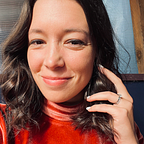Hold it or Drink it: What does the data say about aging wine?
It’s said that only 1% of the wine produced in the world is meant to be aged. Now while that statistic isn’t well cited, and likely is skewed by bulk produced mass-market wine, it still brings the question: what does it even mean to age wine?
I thought this would be a challenging wine question to quantify. And I was right… you can’t just look at some quality rating of each vintage because you’re more likely to capture vintage-to-vintage differences, AND it’s usually unclear when a rating was given. You really need data about the same wine over time to control for a lot of variables.
Imagine a wine nerd, tasting at Tablas Creek in Paso Robles, stumbling upon these vintage charts that quantify the drinkability of wines at a given point in time. After learning that the team literally opens up bottles 3–4 times a year and rates their drinkability, and has been doing it since 2006, I knew this would be the perfect dataset for the task. Jason Haas, partner and general manager of Tablas Creek, was kind enough to share 32 of their past vintage charts and the analysis began.
So what did we learn?
The main things you need to know about aging wine are:
- Wine evolves in the bottle over time
- Not all wine is meant to be aged… there is such a thing as too much time
- And similarly, some wines reach peak drinkability fairly early in their lifetime
